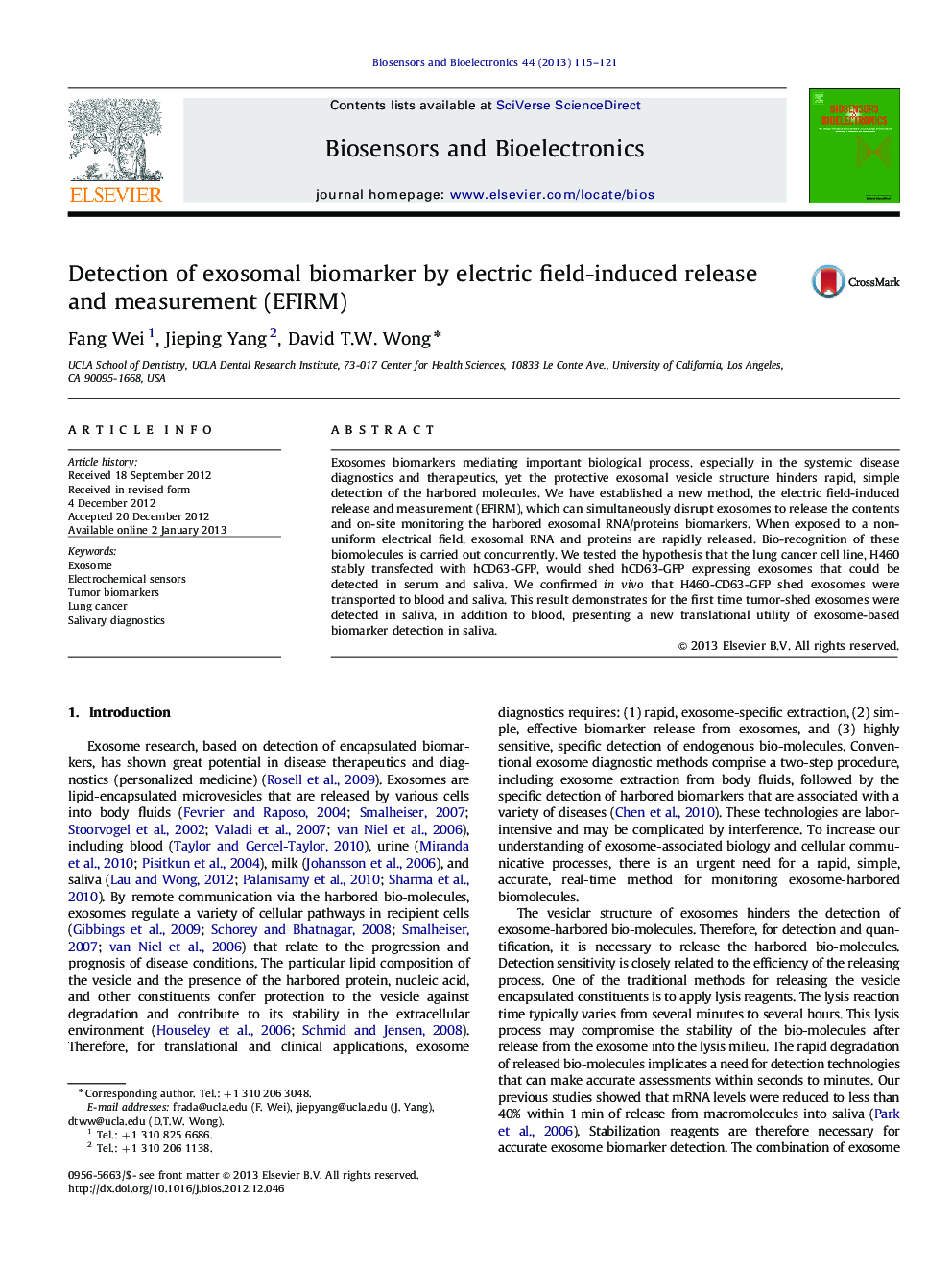| Article ID | Journal | Published Year | Pages | File Type |
|---|---|---|---|---|
| 866905 | Biosensors and Bioelectronics | 2013 | 7 Pages |
Exosomes biomarkers mediating important biological process, especially in the systemic disease diagnostics and therapeutics, yet the protective exosomal vesicle structure hinders rapid, simple detection of the harbored molecules. We have established a new method, the electric field-induced release and measurement (EFIRM), which can simultaneously disrupt exosomes to release the contents and on-site monitoring the harbored exosomal RNA/proteins biomarkers. When exposed to a non-uniform electrical field, exosomal RNA and proteins are rapidly released. Bio-recognition of these biomolecules is carried out concurrently. We tested the hypothesis that the lung cancer cell line, H460 stably transfected with hCD63-GFP, would shed hCD63-GFP expressing exosomes that could be detected in serum and saliva. We confirmed in vivo that H460-CD63-GFP shed exosomes were transported to blood and saliva. This result demonstrates for the first time tumor-shed exosomes were detected in saliva, in addition to blood, presenting a new translational utility of exosome-based biomarker detection in saliva.
► EFIRM technique has been established for measuring biomolecules in exosomes. ► It uses a non-uniform electrical field to release the RNA/proteins from exosome. ► We confirmed in vivo H460-CD63-GFP exosomes transported to blood and saliva. ► It provides an on-site detection of distal tumor-shed biomarkers in exosome.
